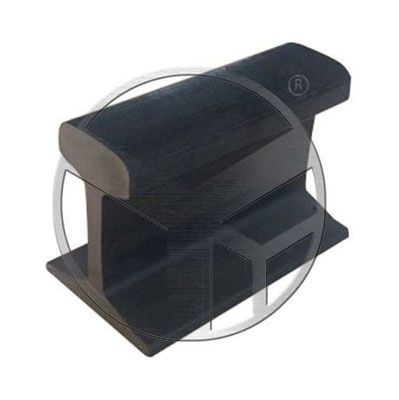Facts About Steel Rails You Need to Know
Steel rail, also known as railway track or simply rail, is a critical component of a railway system. It is the long, narrow, and flat metal beam that trains ride on, and it provides a stable and safe surface for the wheels of the train. Steel rail has been used for railway tracks since the early 19th century and has undergone significant improvements in design and manufacturing over the years.
Here are some important facts about steel rail:
Steel rail comes in different shapes and sizes.
Steel rail is available in a range of shapes and sizes to suit different types of railway tracks and train systems. The most common shapes are flat-bottomed rails, which have a flat base that rests on the sleeper (also known as a tie), and bullhead rails, which have a curved base that fits into a groove in the sleeper. The size of the rail, measured by its weight per unit length, is also an important factor in determining its strength and durability.
Steel rail is made of high-quality steel.
Steel rail is made of high-quality steel, typically with a carbon content of around 0.7% to 1.0%. This steel is alloyed with other elements such as manganese, silicon, and sulfur to improve its strength, toughness, and resistance to wear and tear. The quality of the steel used in the rail is critical to its performance and durability.
Steel rail undergoes rigorous quality control.
Steel rail is subject to rigorous quality control measures during manufacturing to ensure that it meets the required specifications for strength, durability, and safety. The manufacturing process includes various stages such as steelmaking, rolling, and heat treatment, and each stage is carefully monitored and tested to ensure that the final product meets the required standards.
Steel rail requires regular maintenance.
Steel rail requires regular maintenance to ensure that it remains safe and functional. Maintenance activities include track inspection, rail grinding, and track renewal. Regular maintenance helps to detect defects such as cracks, bends, and wear and tear, which can lead to accidents if left unaddressed.
Steel rail has a long lifespan.
Steel rail is designed to have a long lifespan of up to 40 years or more with proper maintenance. The lifespan of the rail depends on various factors such as the type of track, the frequency and weight of trains, and the quality of the steel used in the rail.
Steel rail is subject to wear and tear.
Steel rail is subject to wear and tear due to the constant friction and impact of train wheels. This wear and tear can lead to various types of defects such as head checks, squats, and corrugations, which can compromise the safety and performance of the rail.
Steel rail is prone to deformation at high temperatures.
Steel rail is prone to deformation at high temperatures, which can lead to buckling and other types of failures. This is a particular concern in hot weather conditions, and measures such as temperature monitoring and speed restrictions are implemented to prevent overheating of the rail.
Steel rail can be recycled.
Steel rail is 100% recyclable, and the steel recovered from old rail can be used to manufacture new rail or other steel products. Recycling steel rail is an environmentally friendly and cost-effective way to reduce waste and conserve resources.
In summary, steel rail is a critical component of railway systems and has undergone significant improvements in design and manufacturing over the years. It is made of high-quality steel, subject to rigorous quality control, and requires regular maintenance to ensure that it remains safe and functional. Steel rail has a long lifespan and is recyclable, but it is subject to wear and tear and can deform at high temperatures.
For more information, please visit this link.



评论
发表评论